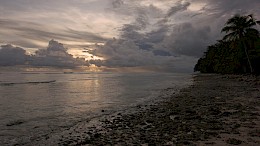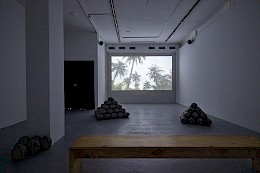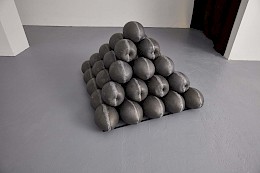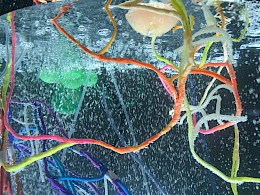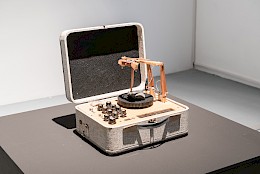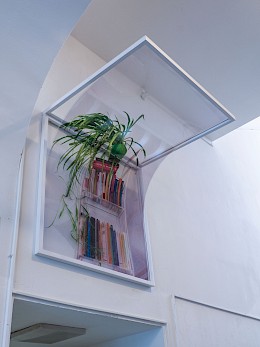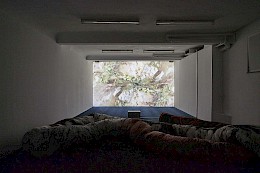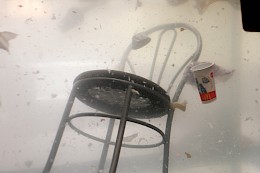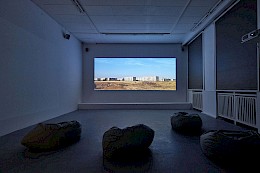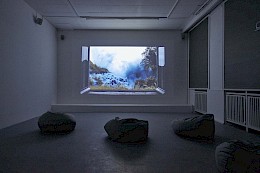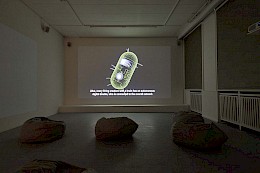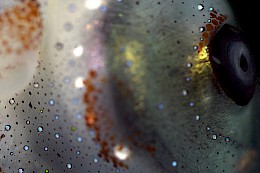Stones, or natural elements such as lithium and salt, say a lot about human behavior and history. Julian Charrière travels around the world in order to play with these elements in a deeply poetic way. He has climbed an iceberg off the coast of Iceland, confronted radioactive regions in Kazakhstan, and crossed a desert in the south of Bolivia. Inspired by science-fiction visions such as “The Terminal Beach” by J. G. Ballard, he has developed a corpus of work that explores broadly the consequences of atomic power and radioactivity.
Iroojrilik
The images of the film Iroojrilik, shot on both sea and land, shows simultaneously the aftermath of this destruction and the recovery of an environment marked by traces of the test. In an area still devoid of humans —who being said to temporarily evacuate the area, to allow with those experiments the end of all wars, could never come back. Nature seems in a way more persistent. Under the water seaweed has slowly covered the shipwrecks while on the shore abandoned bunkers appear colonized by new vegetation. Radioactivity remains nevertheless invisible and the soil will stand polluted for millions of years. Even the new plants growing here remain charged with radiation.
Pacific Fiction—Study for a Monument
For his work Pacific Fiction—Study for a Monument, Charrière imported some of their fruits directly from the Bikini Atoll; coconuts are disposed in the room displayed in piles or pyramids. Encased in lead they might provide a feeling of security, as their new shapes protect against radioactivity. But at the same time, their cannonball-like form recalls as well the colonial violence that has affected that region.
